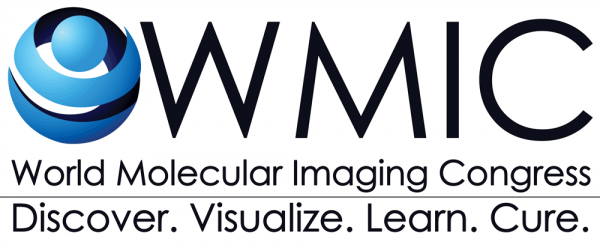Enhancing Cerenkov Luminescence via Radionuclide Attachment to High Refractive Index Nanoparticles
Travis Shaffer, Memorial Sloan Kettering Cancer Center
Introduction: Cerenkov luminescence (CL) is produced when a charged particle has a greater velocity than light in that particular medium. The threshold energy necessary for CL is mostly dependent on the refractive index (RI) of the medium, as expressed by the Frank-Tamm equation (Equation 1). As the RI of a solution or material increases, the threshold energy needed for CL is lowered, resulting in a greater percentage of emitted particles reaching this threshold. This results in an increase in CL, as shown in numerous experiments involving solutions and bulk materials. The clinical utility of CL has recently been shown using various medical radioisotopes for applications for imaging and therapy. However, the very low levels of CL is a continual challenge for in vivo use, and increasing CL output through attachment to nanoparticles with a higher RI could result in improvements in imaging and therapy that utilize CL.
Methods and Results: We recently published a general method to radiolabel silica nanoparticles (SNPs) with various medical radioisotopes without the need for a chelator1. The SNPs were tested in vivo via positron emission tomography (PET) imaging, which showed the stability and utility of the particles for PET imaging. Here we show SNPs, aluminum oxide nanoparticles, and titanium dioxide nanoparticles radiolabeled with yttrium-90 using our published method. These nanoparticles were chosen due to their high refractive index (1.5-2.5). Following radiolabeling, the nanoparticle solutions were imaged on a pre-clinical IVIS instrument (Figure 1), with regions of interest (ROIs) drawn over each well. Quantification of the total Cerenkov luminescence showed greater CL (50-150% depending on the nanoparticle) than the radioisotope in buffer, with a tissue model also showing increased CL over control solutions. This increased CL was seen both with an open filter and with emission 500-840nm (Figure 2). As each of the nanoparticle constructs have a higher RI (1.5-2.5) compared to buffer (1.33), the Frank-Tamm equation predicts this increase in CL via radionuclide attachment to nanoparticles.
Conclusions: As interest in CL for medical applications increases, the strategy of radioisotope attachment to nanoparticles with high RI may become an important strategy for Cerenkov work. Additionally, the routine use of SIO2 as a nanoparticle coating means that this method for enhancing CL can be used for an array of nanoparticles such as quantum dots. With the theoretical background established by this work, nanoparticle systems for an array of applications including photodynamic therapy, imaging, and light-activated drug release may benefit.
1. Shaffer TM, Wall MA, Harmsen S, Longo VA, Drain CM, Kircher MF, et al. Silica Nanoparticles as Substrates for Chelator-free Labeling of Oxophilic Radioisotopes. Nano letters 2015, 15(2): 864-868.
